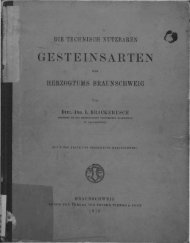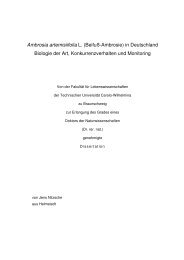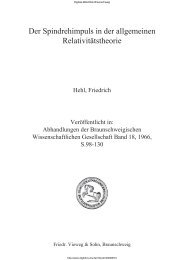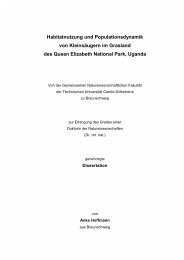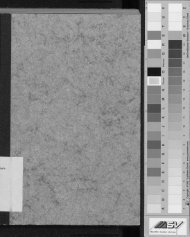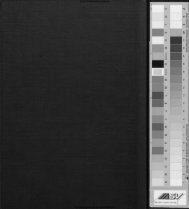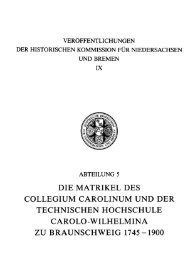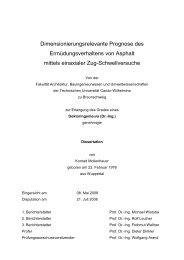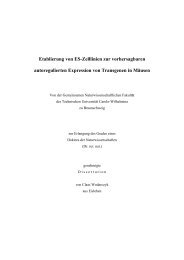Modellbasierte Anforderungsspezifikation sicherheitskritischer ...
Modellbasierte Anforderungsspezifikation sicherheitskritischer ...
Modellbasierte Anforderungsspezifikation sicherheitskritischer ...
Sie wollen auch ein ePaper? Erhöhen Sie die Reichweite Ihrer Titel.
YUMPU macht aus Druck-PDFs automatisch weboptimierte ePaper, die Google liebt.
1. Abstract<br />
In common with other technical sectors, control and safety functions in the rail sector are performed<br />
in numerous places by reactive systems. In many of these systems the actual functionality<br />
is implemented in software. Many systems also carry responsibility for human life and material<br />
assets.<br />
The very important job of ensuring the correct functioning of the system begins with the creation<br />
of the requirements specification. This must contain all necessary information for a manufacturer<br />
to develop and produce the system and to maintain the system over its complete life-cycle. The<br />
requirements specification therefore is a key element in the complete life-cycle of a system.<br />
Currently mainly informal description techniques are used for the specification of requirements<br />
in the rail sector. These techniques are, to a lesser or greater extent, open to interpretation and<br />
subject to ambiguities and misunderstandings. In addition they do not allow automatic checks<br />
for correctness and inconsistencies. This can lead to the introduction of functional errors already<br />
in the requirements definition phase of the system development process.<br />
In the last few years several new ideas and concepts have been presented in various papers as to<br />
how the specification of systems can be improved. The research often focuses on the adaptation<br />
or extension of existing description instruments such as the Unified Modeling Language (UML)<br />
and mainly focuses on the system development phase of the manufacturer. Additionally the integration<br />
of description instruments, methods and tools to a stringent overall concept, necessary<br />
for their productive deployment, is not covered.<br />
This research therefore develops an overall concept, which, for the first time, combines a semiformal<br />
model-based description instrument with a process model for the creation of requirements<br />
specifications. Test and verification methods, required for safety-critical systems, are also<br />
an integral part of this concept.<br />
The standardized Systems Modeling Language (SysML) from the Object Management Group<br />
(OMG) is used as the description instrument. First a subset of the language (SysML (A)) is identified,<br />
which appears to be particularly suitable for the description of requirements models in<br />
the rail sector. These language elements are then applied, within a fixed model architecture, to<br />
the description of several aspects of a future system, such as the interface with the environment,<br />
system functions and system behavior. Grouping and organization of the requirement model -<br />
absolutely necessary in practice - is realized through so-called “views” and a two-level recursive<br />
hierarchy of systems and subsystems. Interfaces are also provided in order to couple information<br />
with non-functional requirements, which cannot be sufficiently described in the modeling<br />
language. This part of the work is completed with a listing of consistency conditions, which the<br />
requirements model must meet in order that the integrity of the model content is guaranteed<br />
across all grouping levels.<br />
The second significant component of the work is a process model, which defines the model<br />
creation procedure. As opposed to system development processes, which are carried out later<br />
in the life-cycle and build on the requirements specification, one is confronted with a minimal<br />
amount of mostly vague and quickly-changing information. The process model must allow for<br />
these constraints.<br />
1




